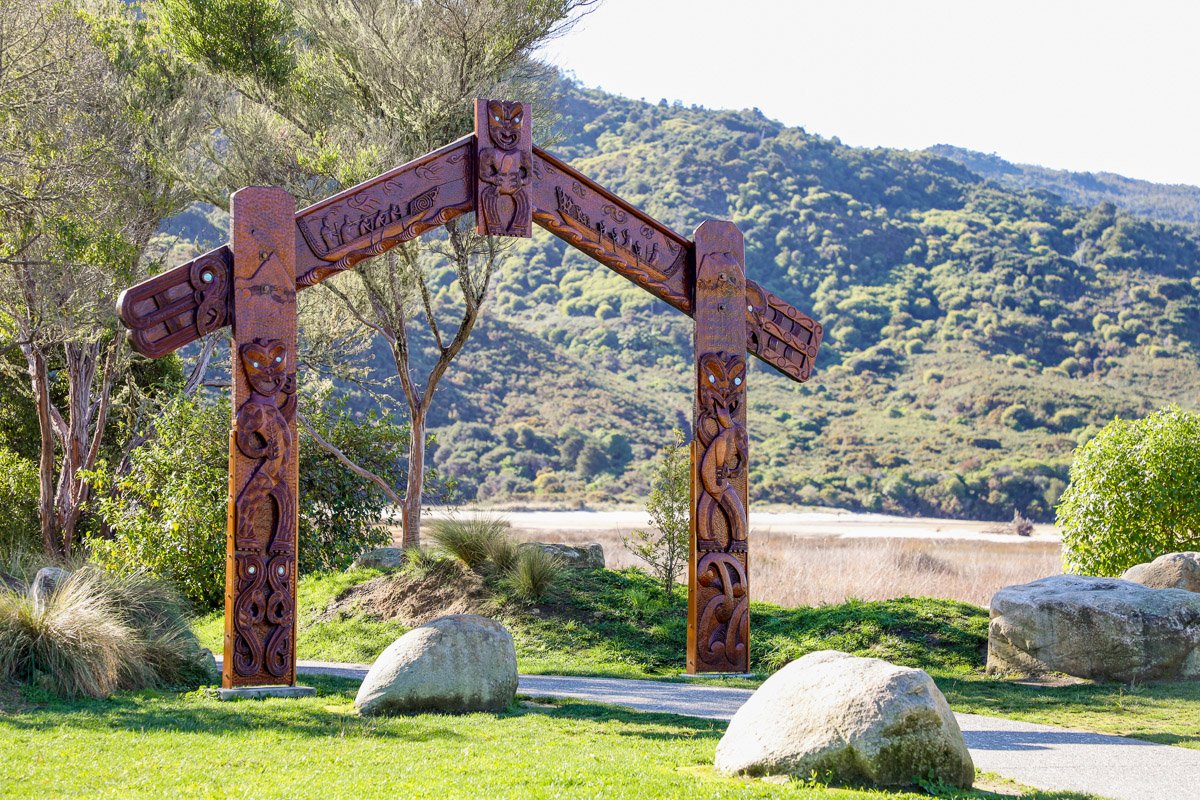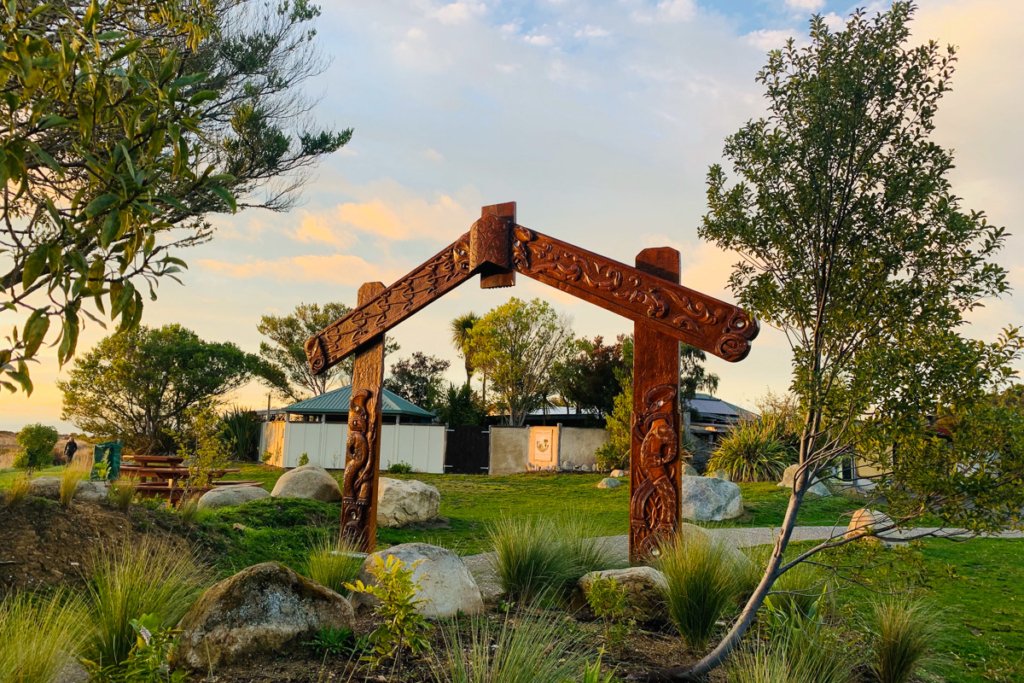"The name Mārahau translates literally as windy garden, not just for its cultivated foods, as the whole area would have been a great kai (food) gathering area. The Tuangi (cockle) beds were abundant, the sea teeming with life and the forests and valleys full of birds.."

As visitors exit at this Southern end of the park, they will see carvings on the other side of this waharoa. This side of the Waharoa is telling a story of the natural elements that affect everything in this special place known as Mārahau (windy garden). Each morning Tama-nui-te-Rā rises in the East, in the centre, Te Ao (the clouds) are depicted. On the right is Tāwhirimātea (atua of the winds and storms) who brings the wind every afternoon in the summer months, which is renowned in this area.
On the left side is Tāne Mahuta (atua of the forest), a reminder of where you have been, or that you may be about to enter his domain. On the right side is Haumia-tiketike (atua of uncultivated plants): large areas of the Mārahau valley and what is now National Park was covered in forest where wildlife flourished and many plant species naturally grew – another valuable food resource for the Tūpuna. The name Mārahau translates literally as windy garden, not just for its cultivated foods, as the whole area would have been a great kai (food) gathering area. The Tuangi (cockle) beds were abundant, the sea teeming with life and the forests and valleys full of birds.
At the very bottom, left and right are two faces, these are the two sides of Papatūānuku (Mother Earth’s) face. We must always be mindful of where we step and to tread lightly as we walk over her, so future generations can enjoy these taonga (treasures), like the National Park, which are in our care as Kaitiaki (guardians) for today.
This carving was commissioned by Department of Conservation as part of a series of installations in the National Park to start to re-indigenise the space. The carver is Mark Davis, a Master Carver from Nelson, and the timber is Tōtara sourced from the West Coast. This narrative has been a collaboration between Manawhenua Iwi and Department of Conservation.
Words by Renee Thomas


